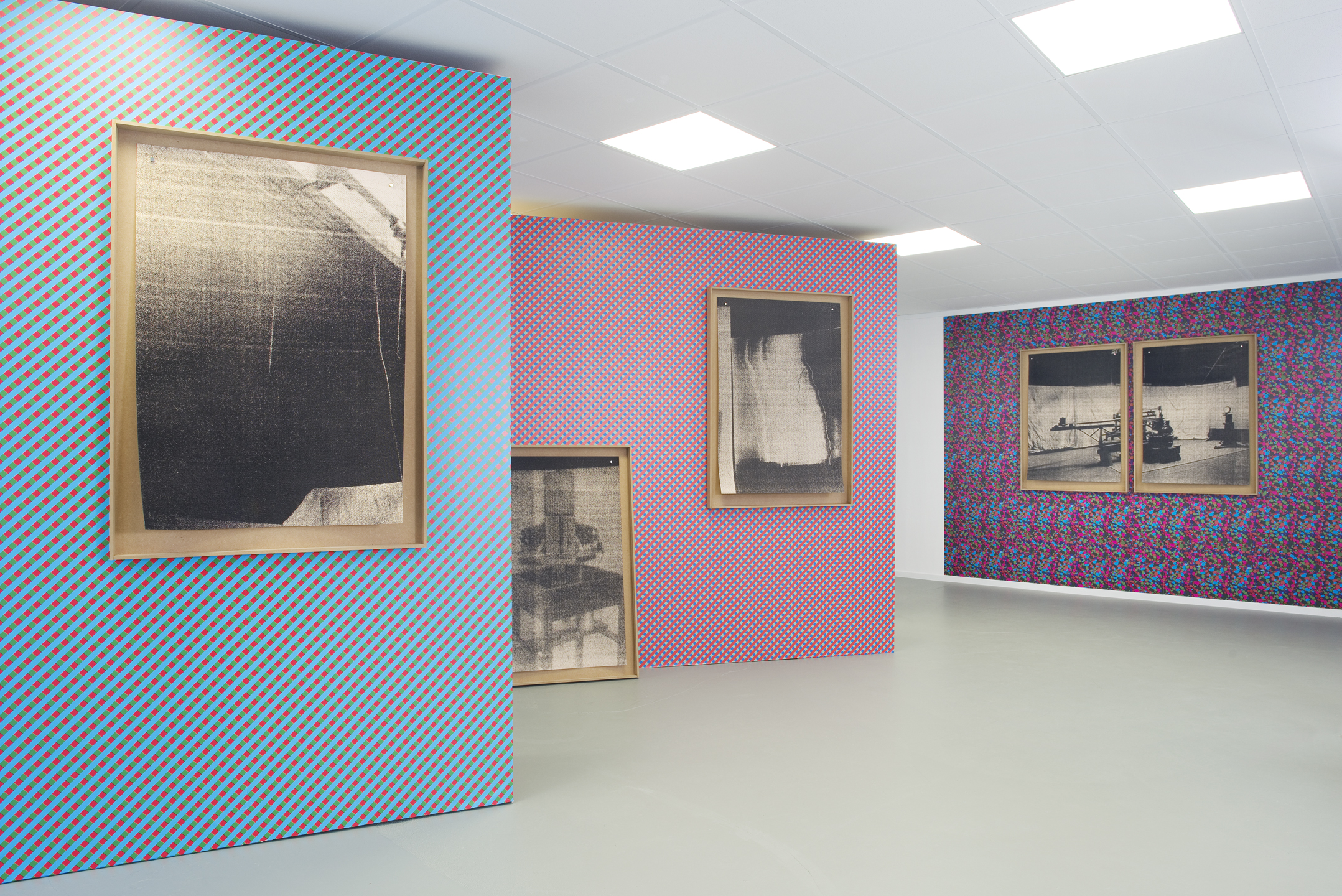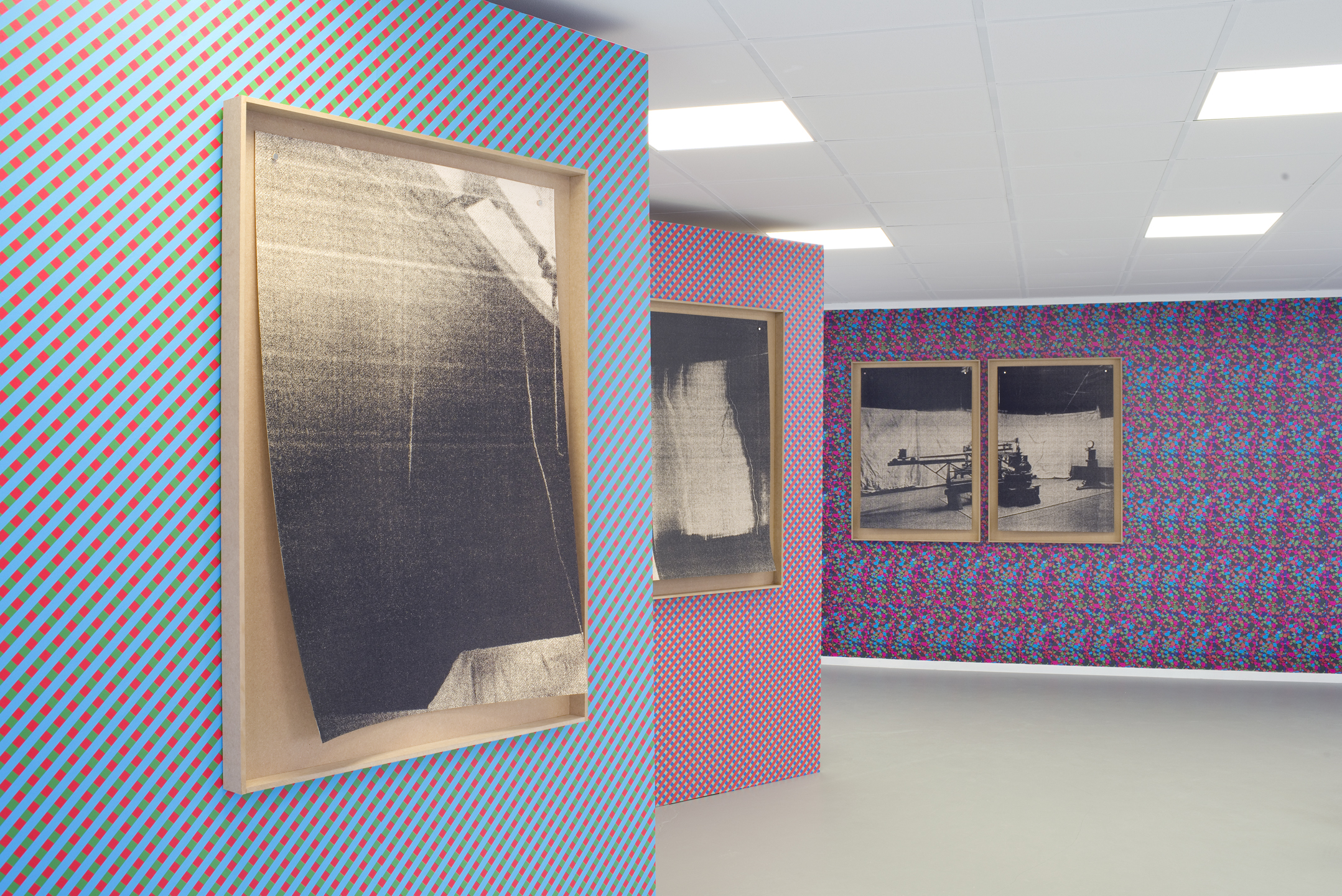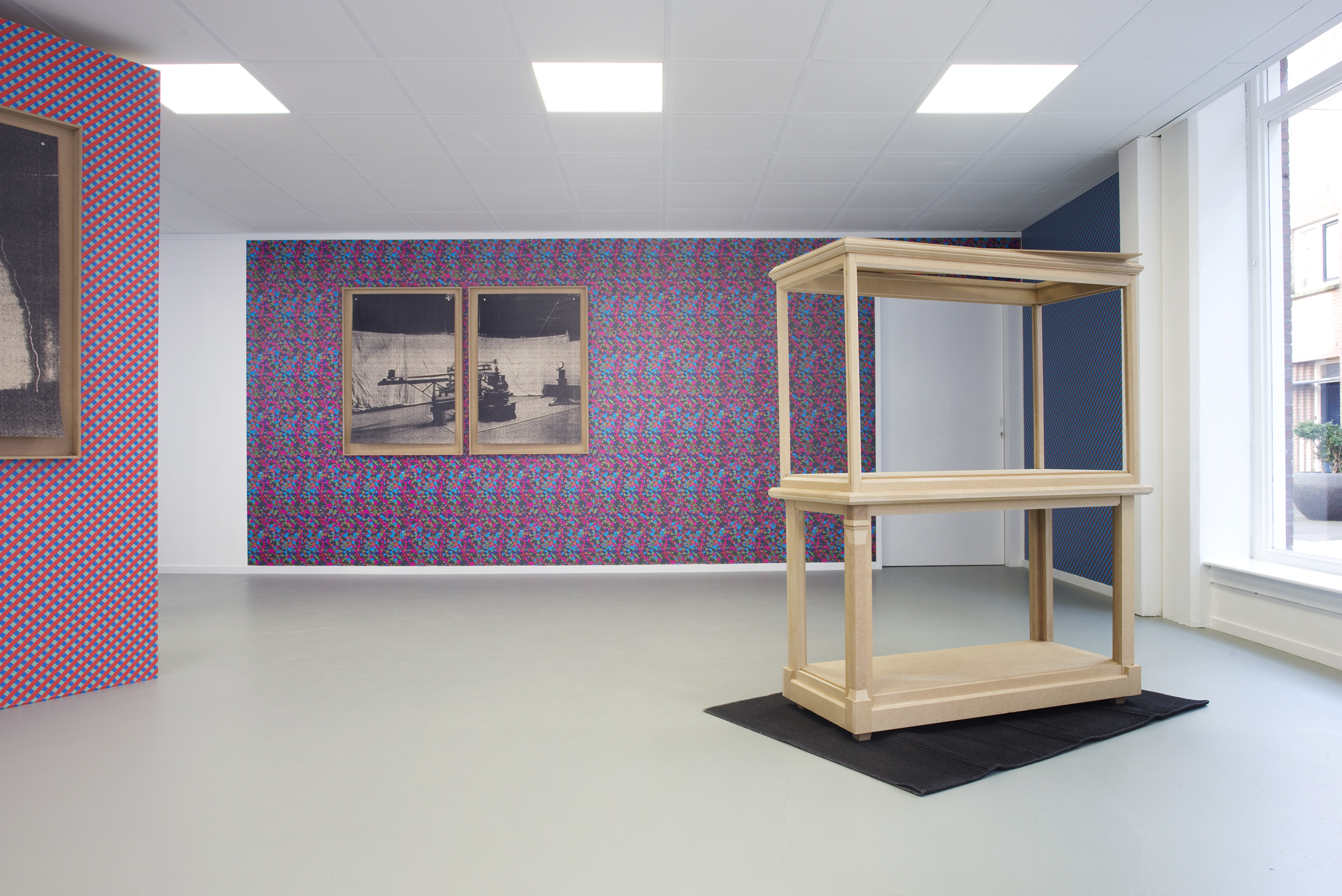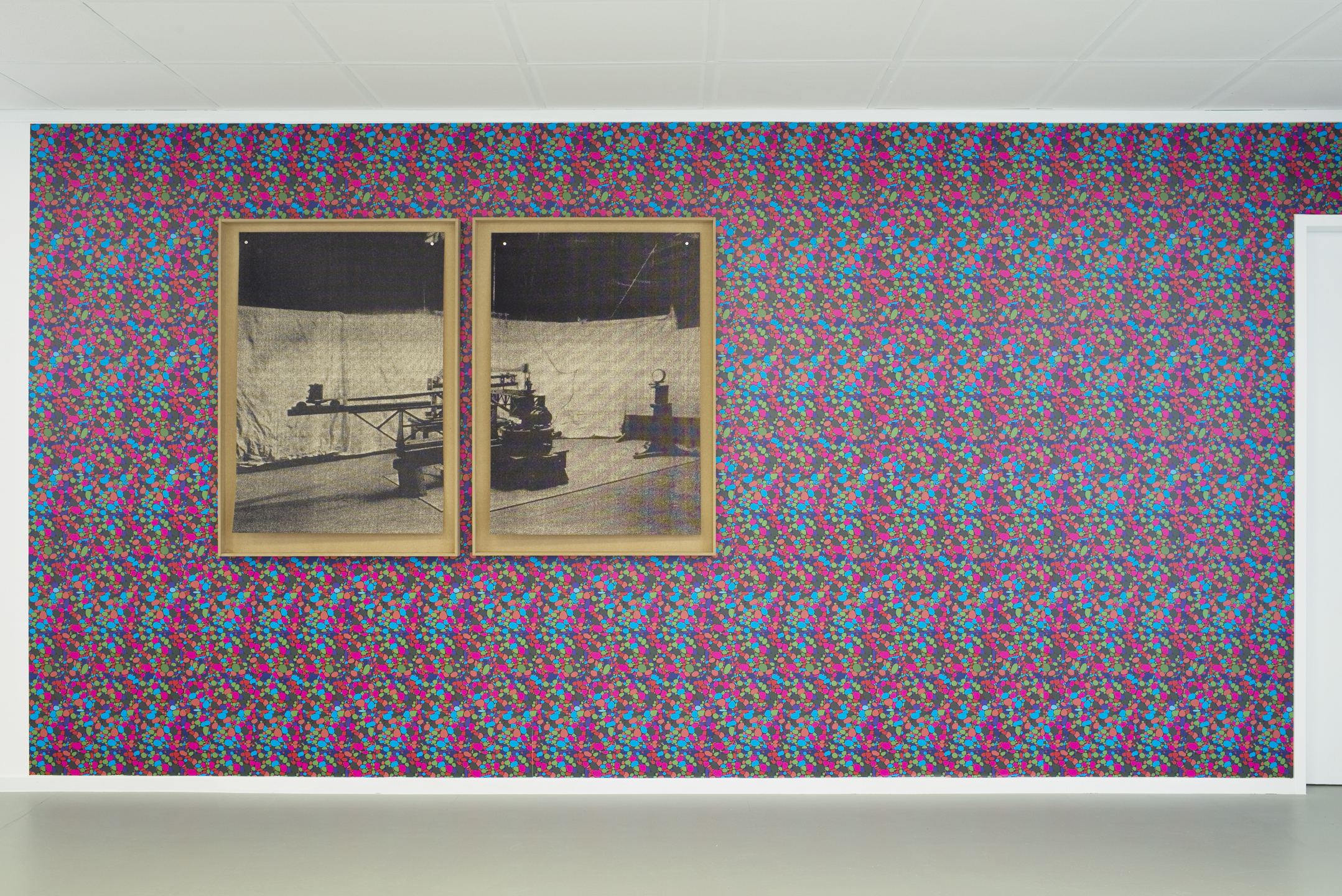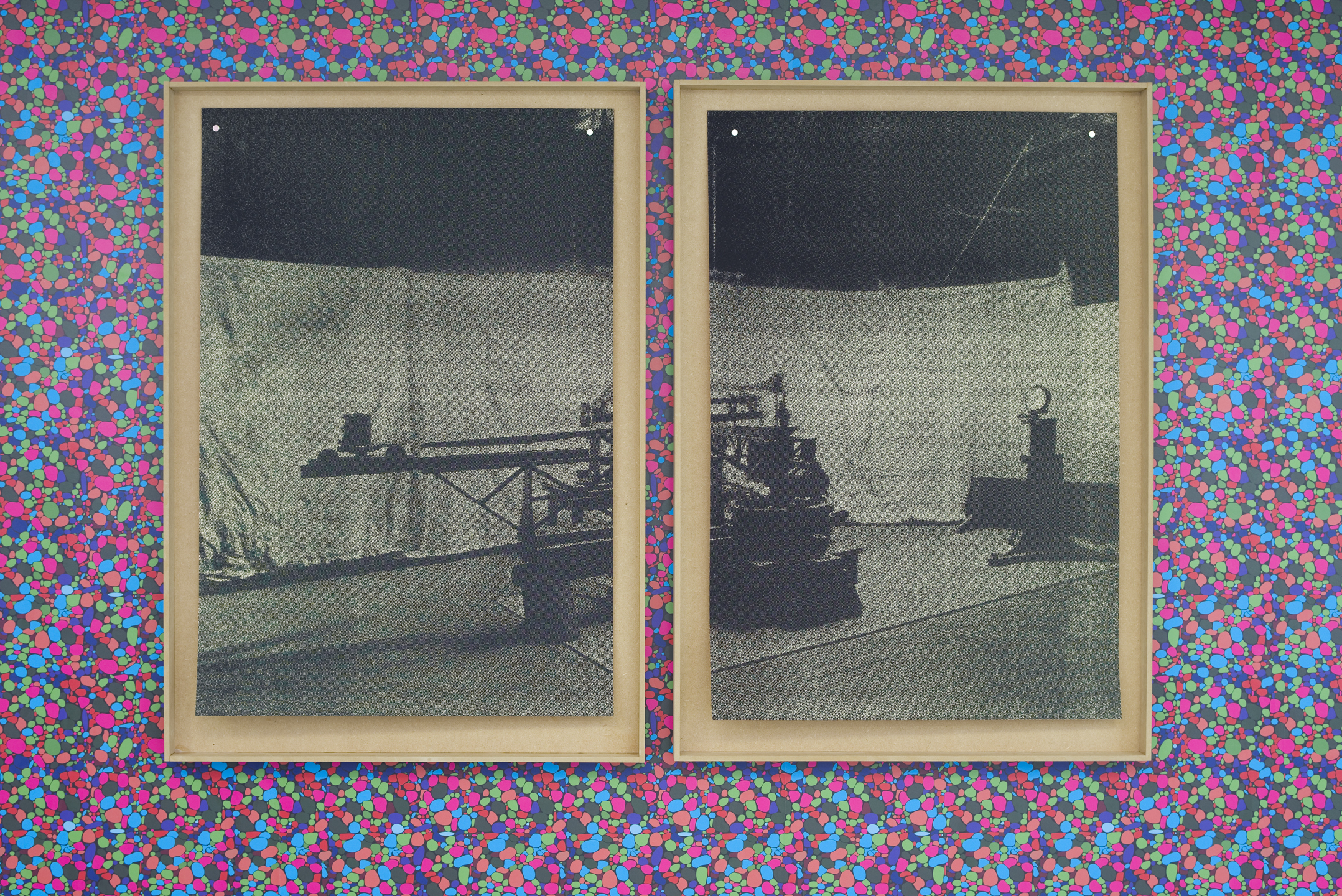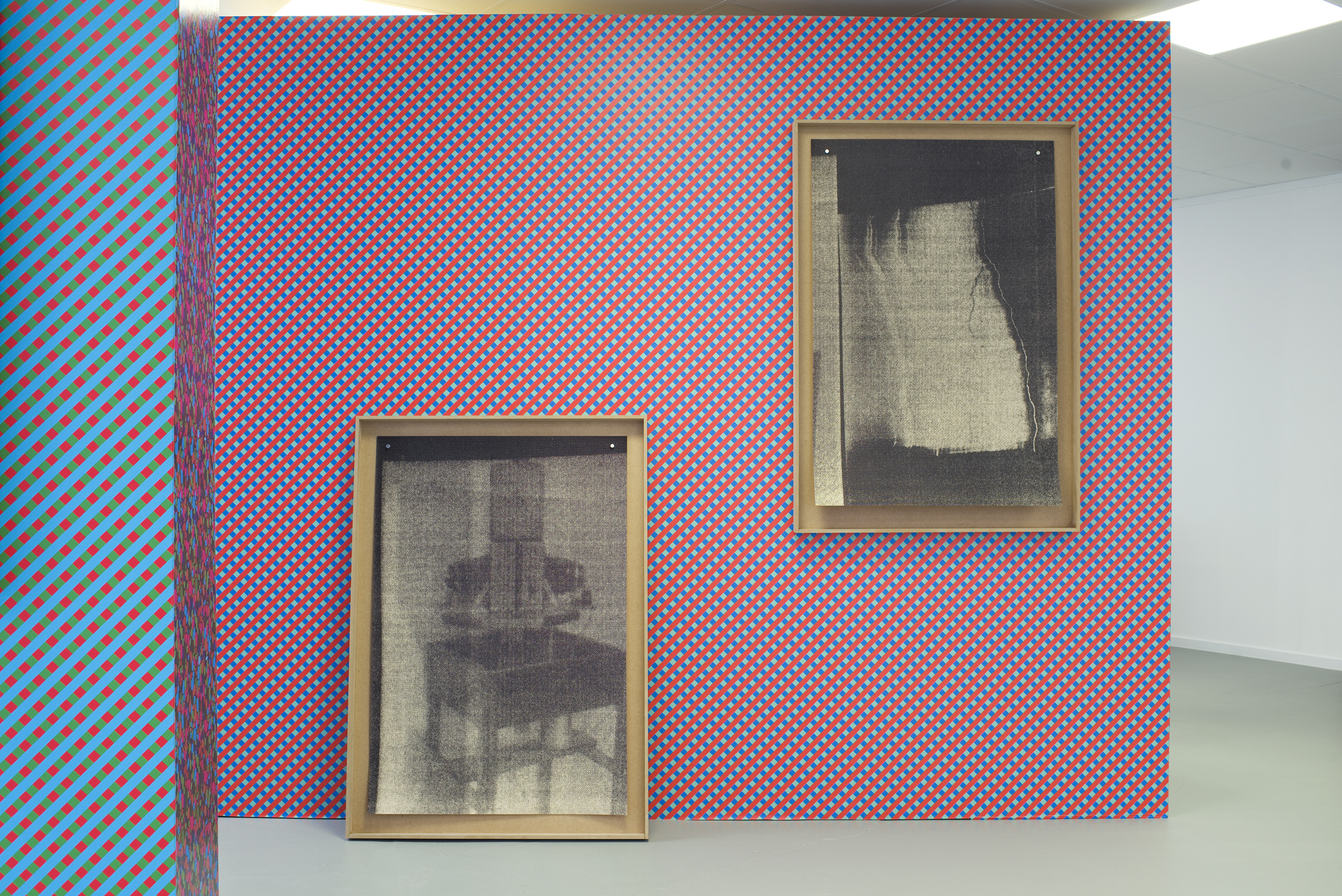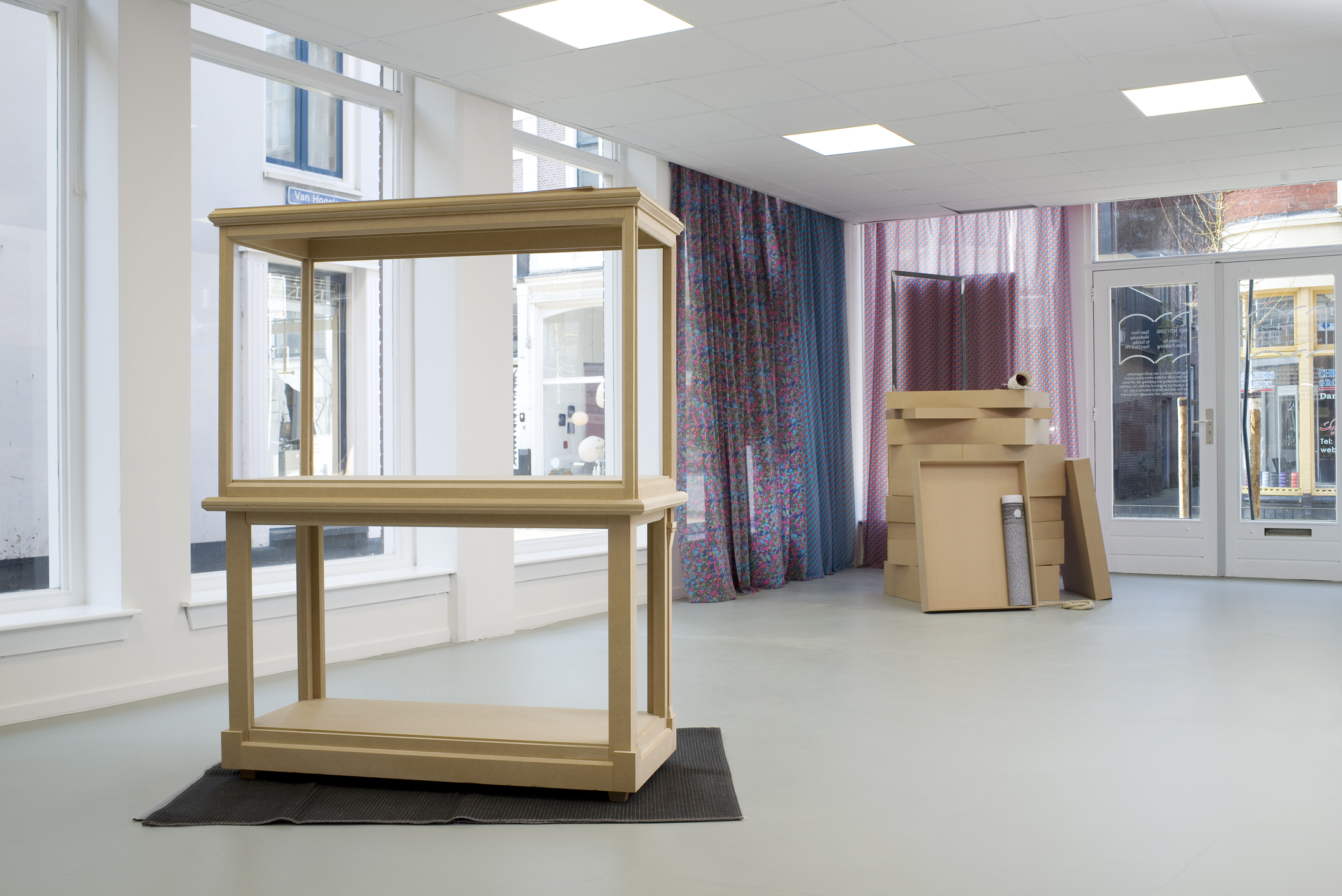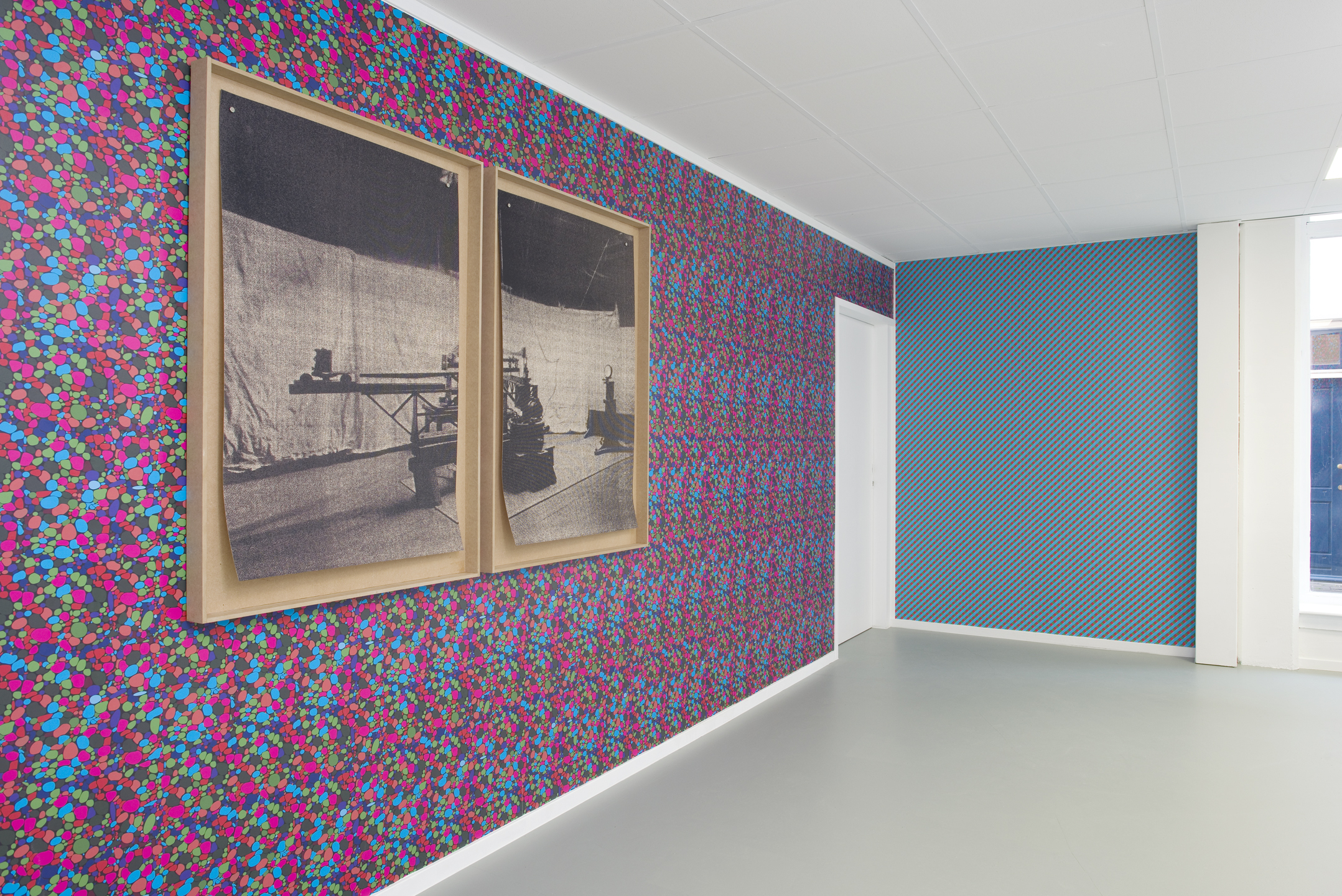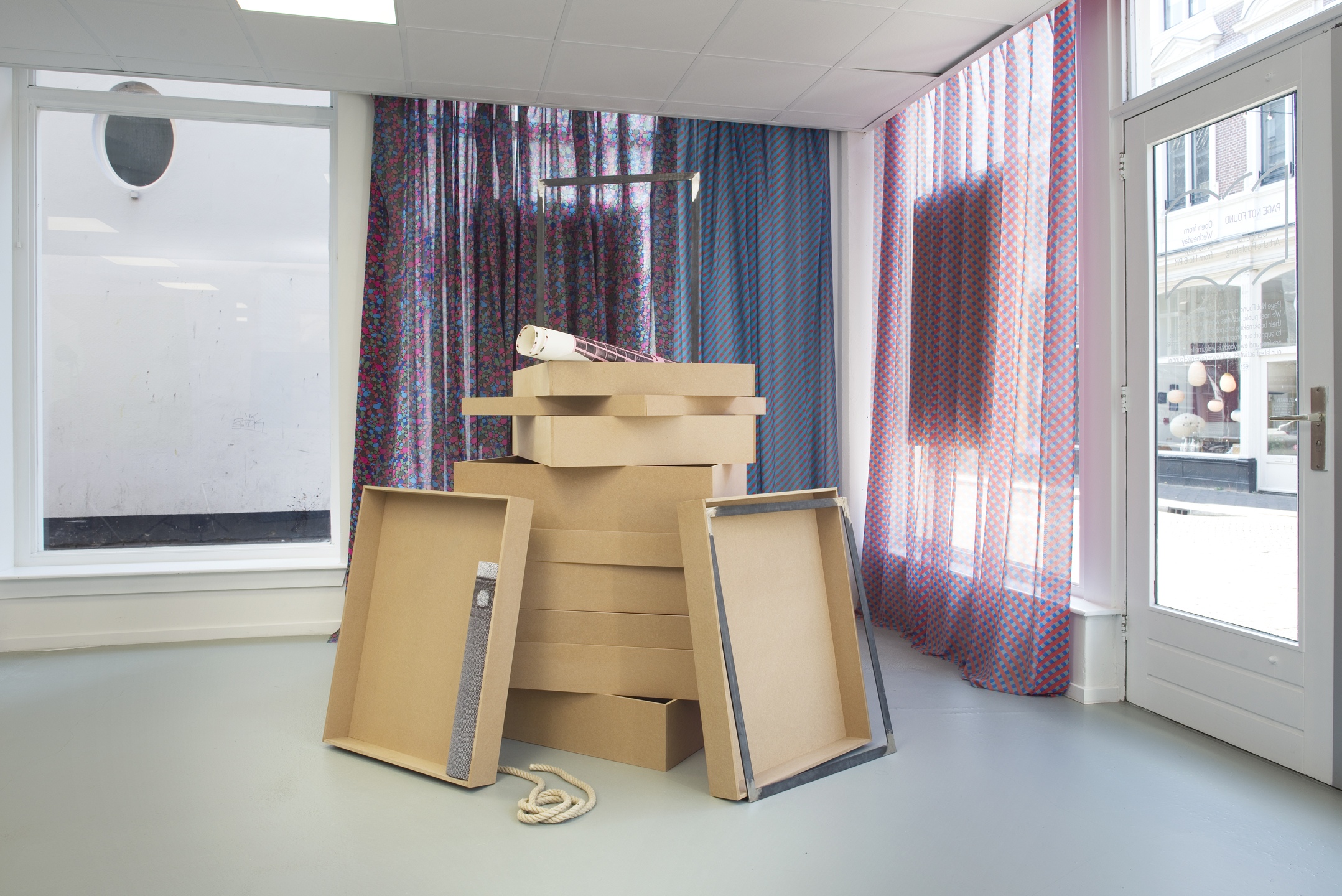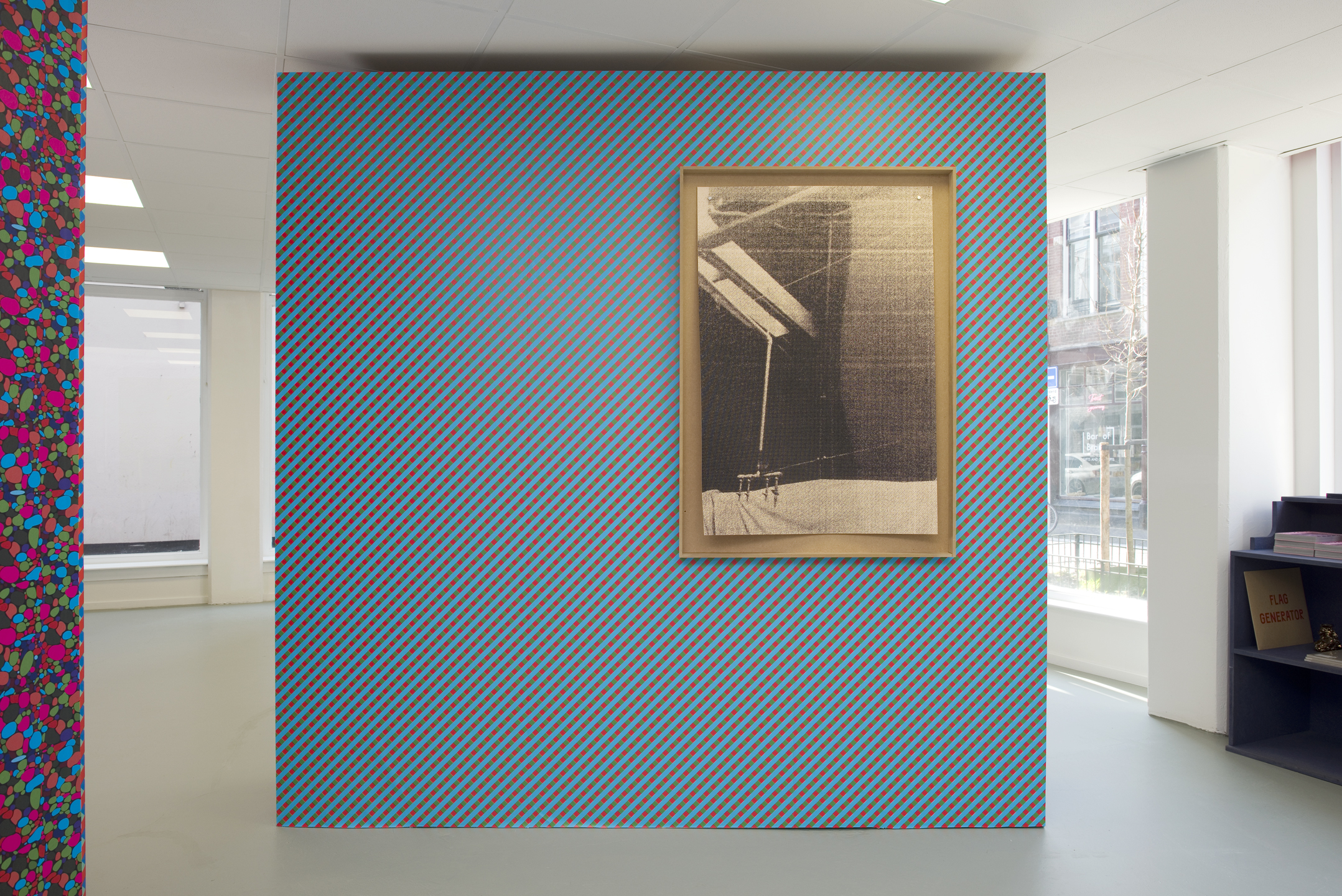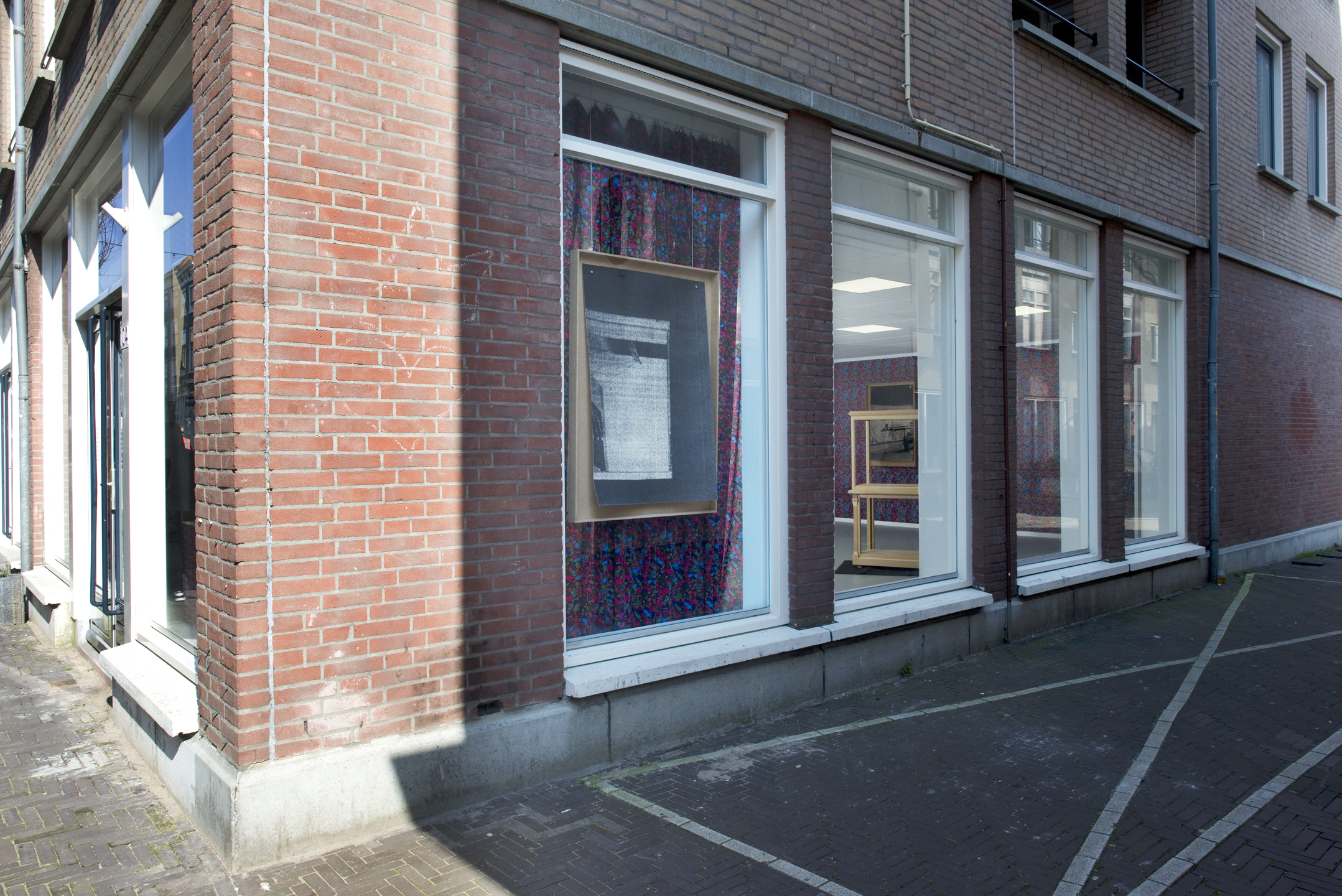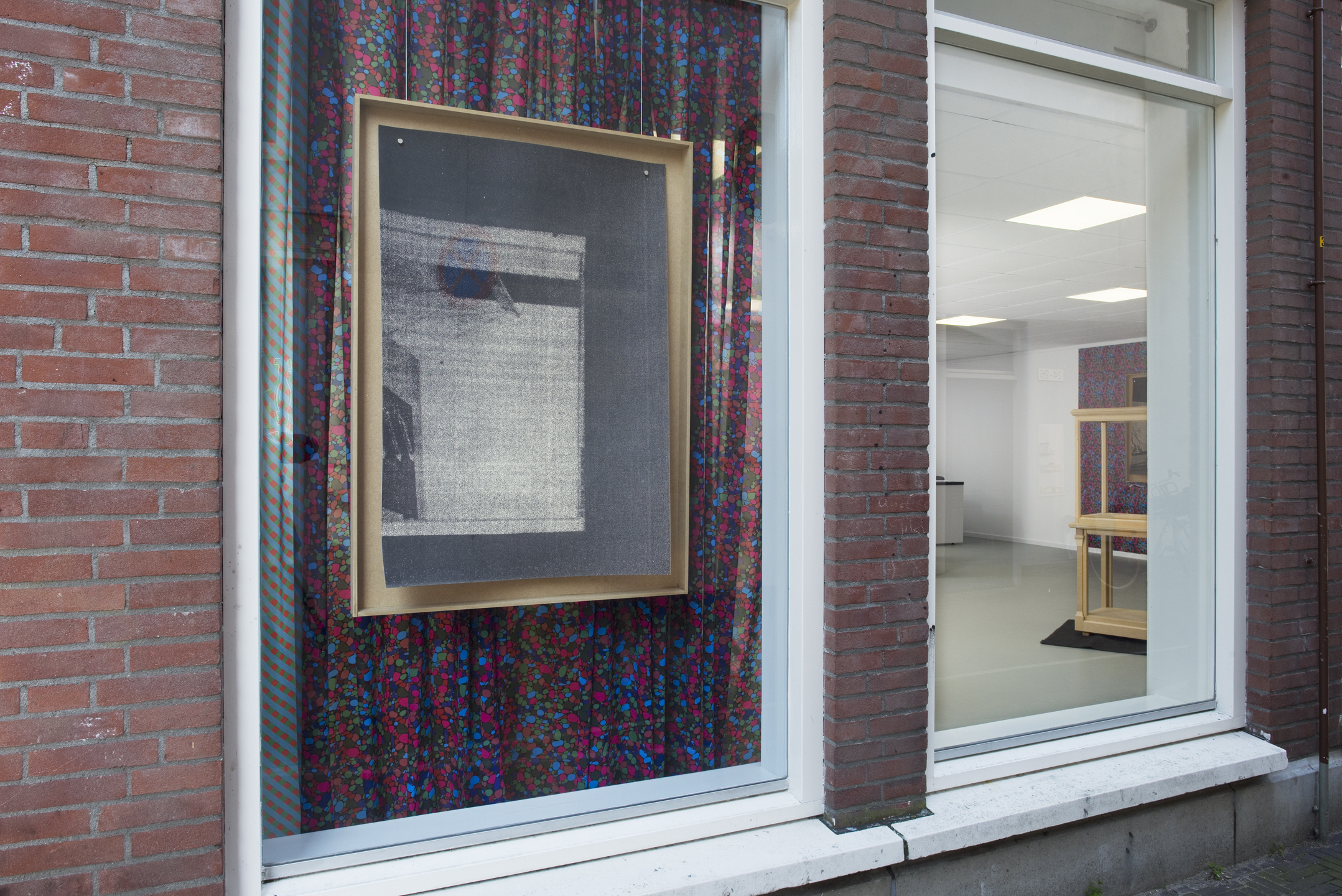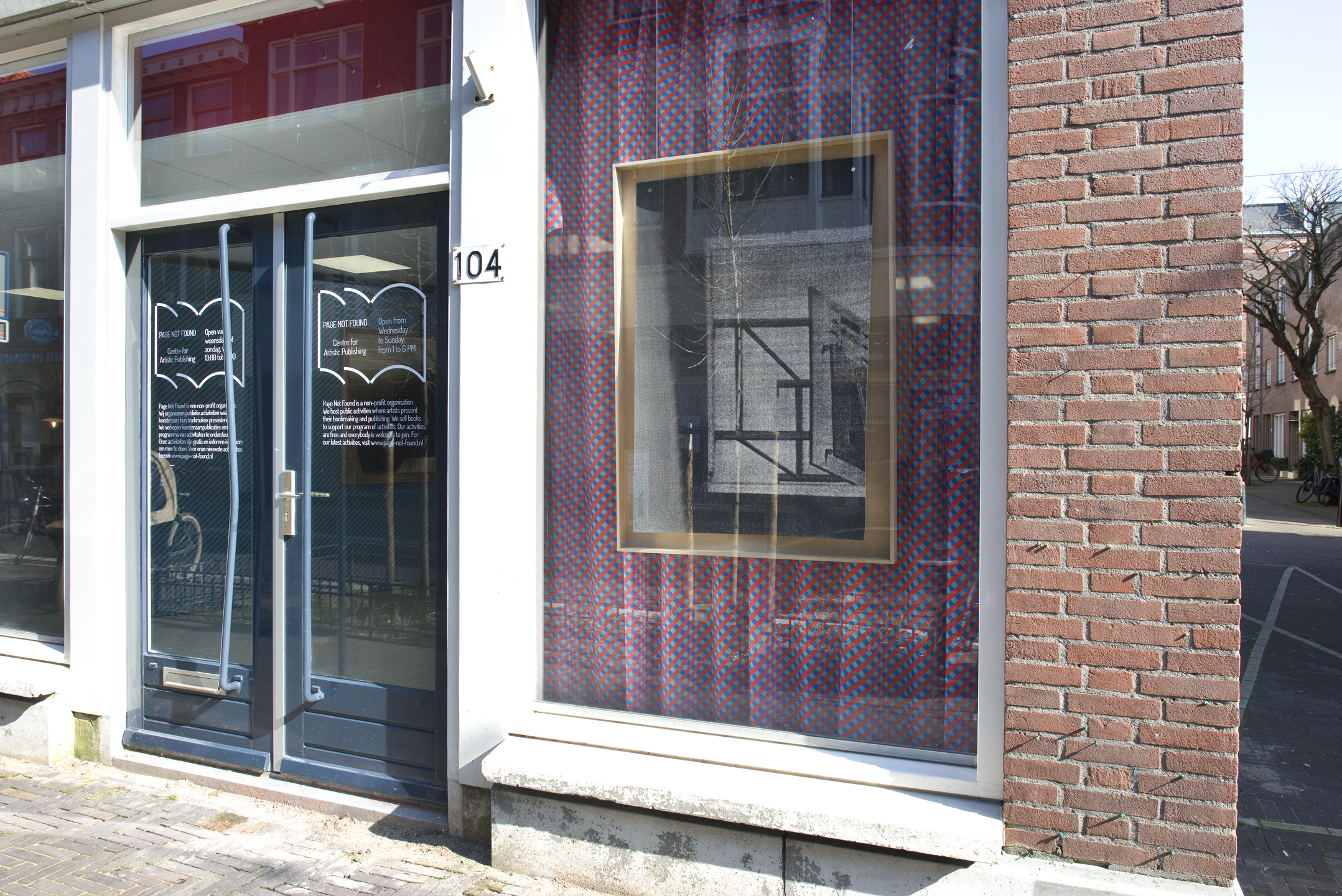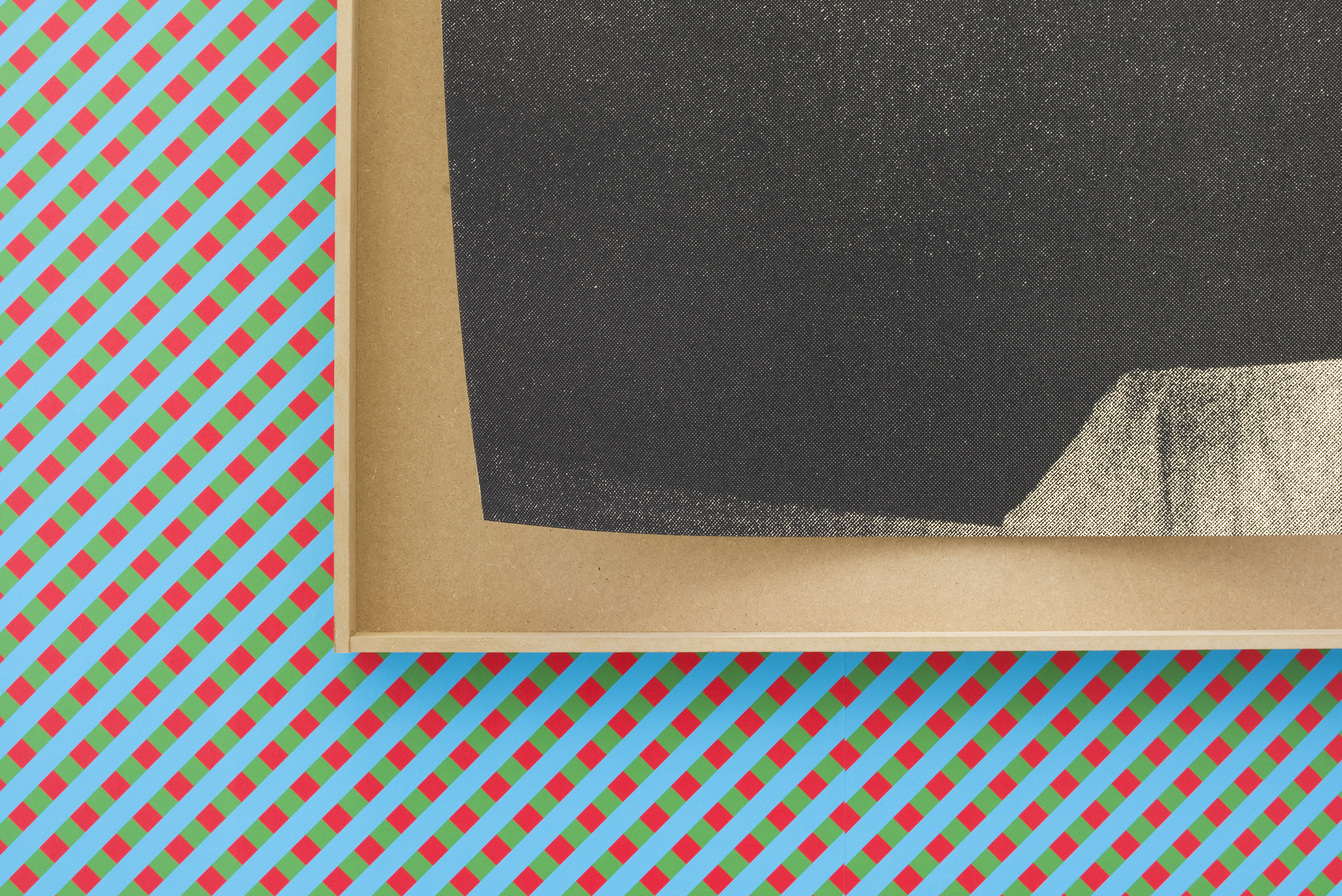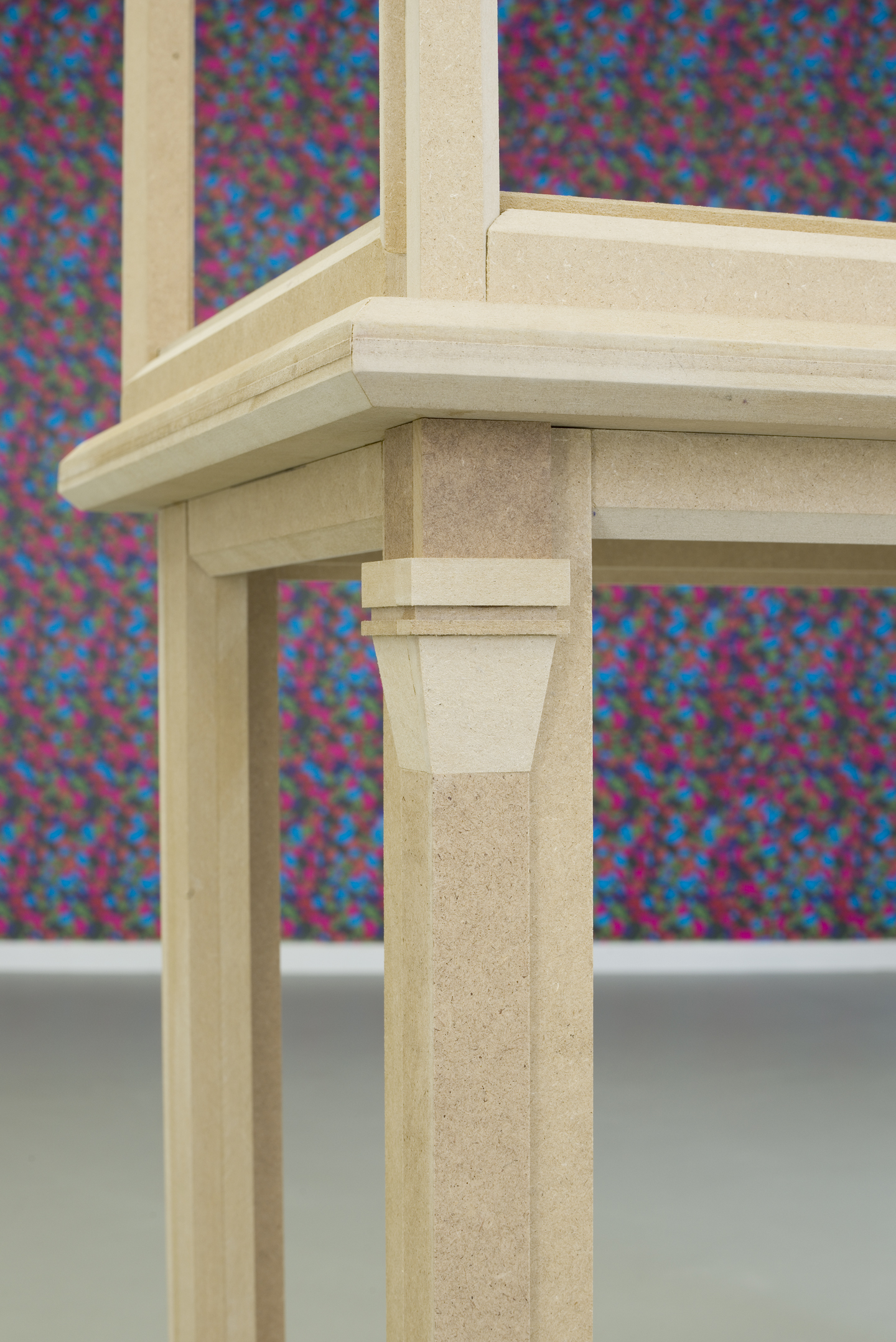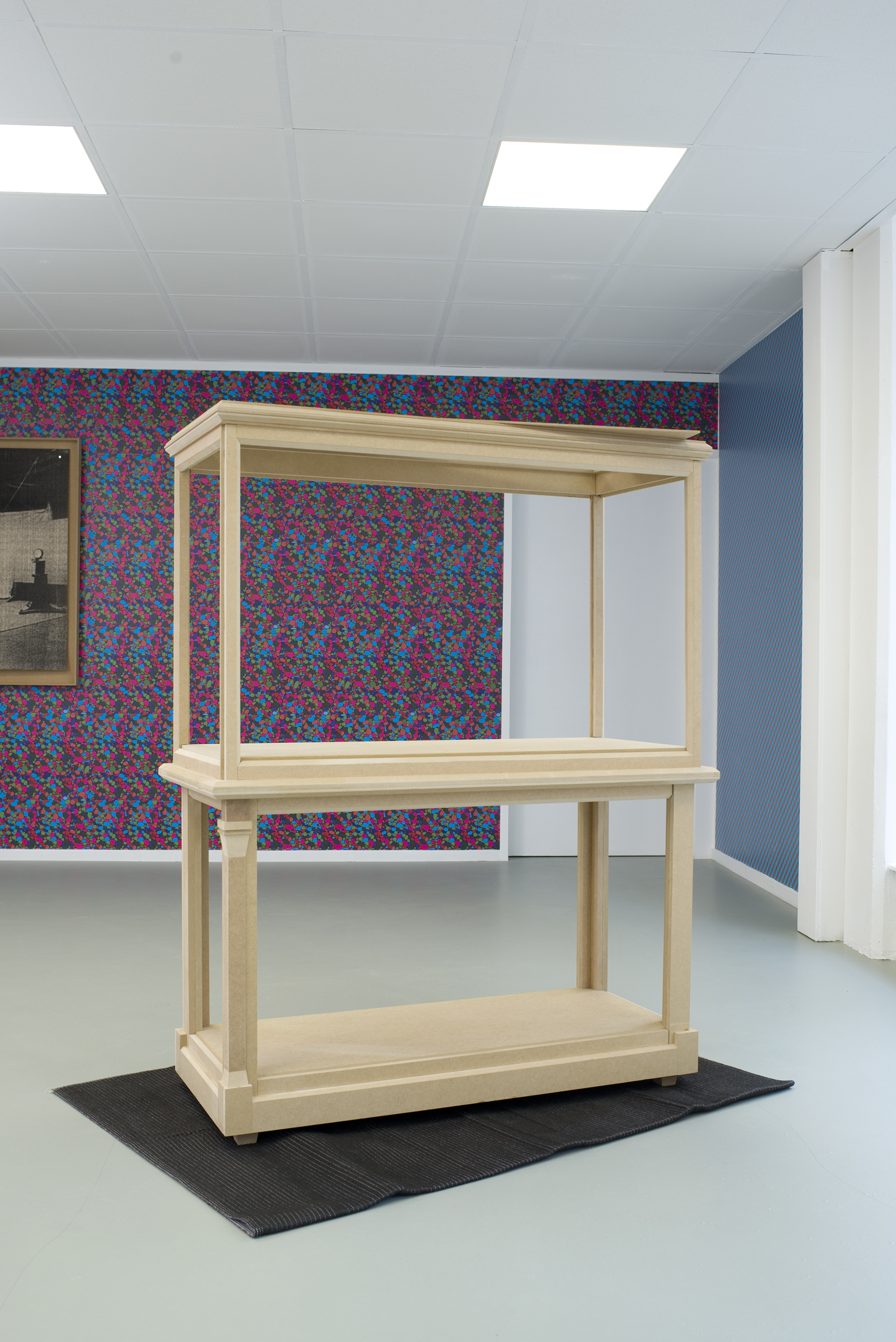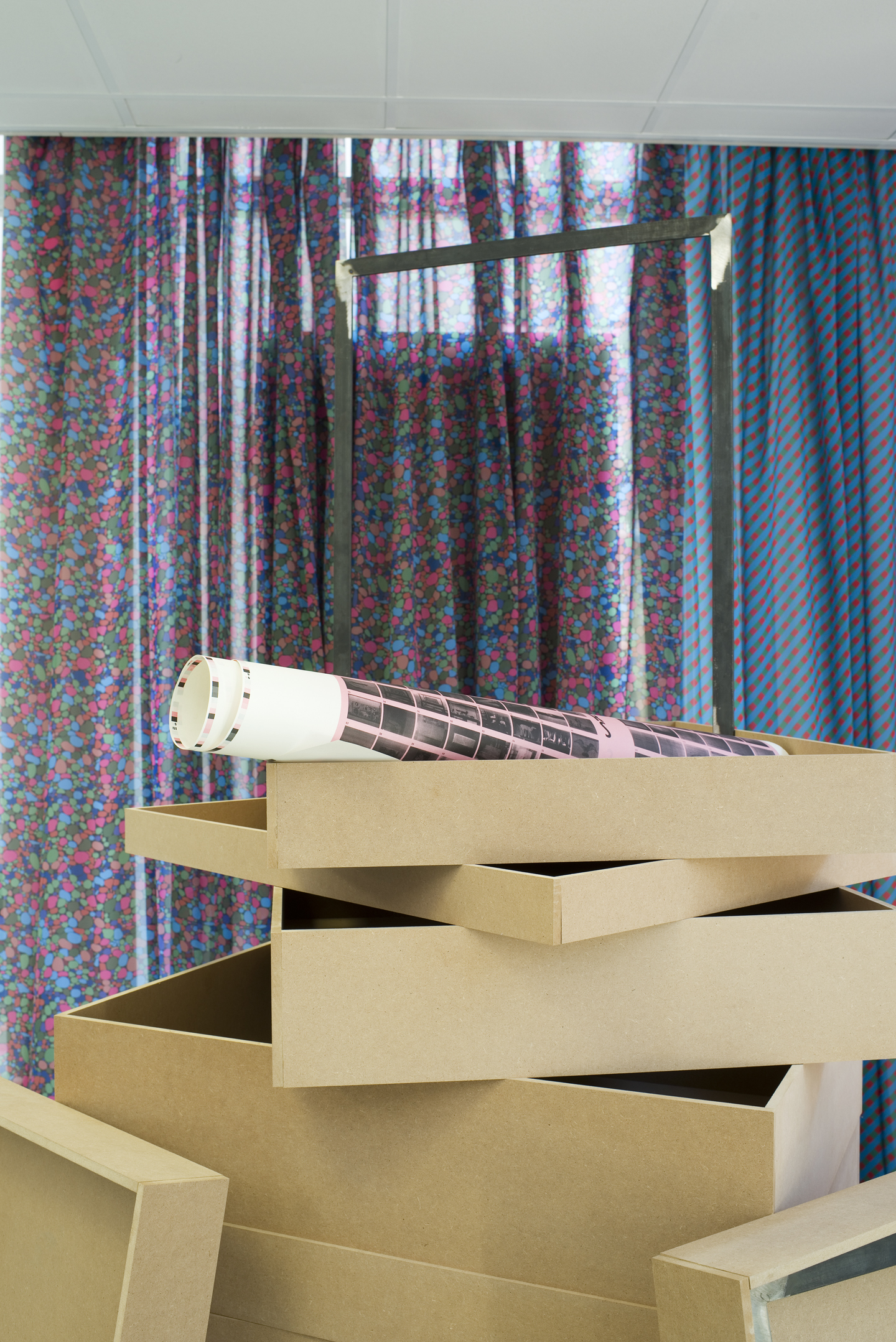For her solo exhibition at Page Not Found entitled “Double Exposure(s) –
(Stutters)” Dominique Hurth developed a new installation that expands from her research
and the material that created Stutters. The title refers to the photographic
process of superimposition of two or more exposures on one image, and
serves as a metaphor for the artist: as a way of looking at the history of the
institution through the subjects of the photographs, and at the same time at
the institution historicising its own history through the infrastructure of the
archives.
In a series of colorful prints of various scales, techniques and surfaces and a limited edition of silkscreens, she looks at the technological aspect of the cyanotypes and its connection to photographical and printing history. Thinking of the cyanotypes as holders and carriers of information, she wonders in those prints how to talk about photography without showing any photographs and how to think through image making within the printing technologies and photographic processes that were developing fastly when the Smithsonian photography collection was being built. Some prints serve as backdrops for some others, enhancing moments of zooming out or in the image, looking at the image as a whole or at what is to be seen on it, and serving as an environment for the installation. Image-making and image reproduction are thus at the core of the wallpapers that translate microscopic images of “autochrome” and “dufay” color photographic process into large-scale patterns. The silkscreens on the other hand enhance the notion of image reproduction: Hurth’s images of the cyanotypes she looked at in the archives and worked anew through photography, photocopy, scanning and offset printing, are here disappearing one more time in the reproduction technology itself of the silkscreen and through eight different hues of black pigments. The raster of the screen meets the raster of the image, while actually showing or rather exposing in the images themselves apparatuses for photographic reproduction from the late 1880s.
In a set of sculptural settings, she focuses on dynamics and hierarchies of archiving (and gaps) in the framework of a so-called “national” collection, focusing on the infrastructures of display. Central to the installation is a replica of a vitrine from the 1880s that Hurth looked for and chased in the storage of the Smithsonian Institution after seeing it represented on a cyanotype in the archives. The replica of the vitrine (used in the first Photography Exhibition at the Smithsonian in 1913) is both object and subject of attention: while it used to be the site to hold and exhibit arte - facts, it becomes in the installation the object on display, reversing and thus questioning the systemics of exhibiting. Another sculptural element revolves around a stack of cabinets shelves and quotes another image from her book. Those also play with the repetitive aspect of image reproduction – displaying a display of display cases.
The exhibition is accompanied by a public programme with Dr. Michelle Caswell (Prof. of Archival Studies, UCLA), Ruth Noack (curator) and Babak Afrassiabi (artist and filmmaker) revolving around collection-making, politics of exhibition-making, the violence taxonomy of archives and the storage as a site for fiction.
In a series of colorful prints of various scales, techniques and surfaces and a limited edition of silkscreens, she looks at the technological aspect of the cyanotypes and its connection to photographical and printing history. Thinking of the cyanotypes as holders and carriers of information, she wonders in those prints how to talk about photography without showing any photographs and how to think through image making within the printing technologies and photographic processes that were developing fastly when the Smithsonian photography collection was being built. Some prints serve as backdrops for some others, enhancing moments of zooming out or in the image, looking at the image as a whole or at what is to be seen on it, and serving as an environment for the installation. Image-making and image reproduction are thus at the core of the wallpapers that translate microscopic images of “autochrome” and “dufay” color photographic process into large-scale patterns. The silkscreens on the other hand enhance the notion of image reproduction: Hurth’s images of the cyanotypes she looked at in the archives and worked anew through photography, photocopy, scanning and offset printing, are here disappearing one more time in the reproduction technology itself of the silkscreen and through eight different hues of black pigments. The raster of the screen meets the raster of the image, while actually showing or rather exposing in the images themselves apparatuses for photographic reproduction from the late 1880s.
In a set of sculptural settings, she focuses on dynamics and hierarchies of archiving (and gaps) in the framework of a so-called “national” collection, focusing on the infrastructures of display. Central to the installation is a replica of a vitrine from the 1880s that Hurth looked for and chased in the storage of the Smithsonian Institution after seeing it represented on a cyanotype in the archives. The replica of the vitrine (used in the first Photography Exhibition at the Smithsonian in 1913) is both object and subject of attention: while it used to be the site to hold and exhibit arte - facts, it becomes in the installation the object on display, reversing and thus questioning the systemics of exhibiting. Another sculptural element revolves around a stack of cabinets shelves and quotes another image from her book. Those also play with the repetitive aspect of image reproduction – displaying a display of display cases.
The exhibition is accompanied by a public programme with Dr. Michelle Caswell (Prof. of Archival Studies, UCLA), Ruth Noack (curator) and Babak Afrassiabi (artist and filmmaker) revolving around collection-making, politics of exhibition-making, the violence taxonomy of archives and the storage as a site for fiction.
Double-Exposure(s)
– (Stutters)
List of works
Also Known As
8 high pigmented Silkscreen prints on Bank Creams 300g/m” paper, each 76 x 112 cm, in MDF frames 90 x 124cm, edition of 4, 2024.
Produced with Handsiebdruckerei, Berlin.
Pigment list: Bone Black (created by grinding and sieving bone charcoal, which is produced by the dry distillation of animal bones); Aniline Black (the oldest black synthetic pigment in the chemical industry); Peach Black (made by charring peach kernels); Cherry Black (made by charring cherry kernels); Iron Oxide Black; Grape Seed Black (made by charring grape seeds); Carbon/Industry Black; Spinel Black (only “true” black in the pigment industry)
Digital print on wall-paper, dimension variable and reflection digital print on textile (woven cotton 50g/m2), each 140 x 250cm, 2024
(Production assistance: Jakob Urban)
Empty Exhibit Case
MDF (dimension 160 x 130 x 50cm), moving blanket, 2024 (Production assistance: Sina Ahmadi)
This space to be filled with Velox prints
MDF, flat iron, rope, digital print on paper, offset print on paper (first printing sheet from the book Stutters); dimension variable, 2016-2024
Installation views: Solo Exhibition “Double-Exposure(s) – (Stutters)”, March 8th-May 8th, 2024 at Page Not Found.
Photo Credits: Jhoeko. Courtesy the photographer and Page Not Found.
The exhibition is generously supported by the Mondriaan Fonds and the Gemeente den Haag.
– (Stutters)
List of works
Also Known As
8 high pigmented Silkscreen prints on Bank Creams 300g/m” paper, each 76 x 112 cm, in MDF frames 90 x 124cm, edition of 4, 2024.
Produced with Handsiebdruckerei, Berlin.
Pigment list: Bone Black (created by grinding and sieving bone charcoal, which is produced by the dry distillation of animal bones); Aniline Black (the oldest black synthetic pigment in the chemical industry); Peach Black (made by charring peach kernels); Cherry Black (made by charring cherry kernels); Iron Oxide Black; Grape Seed Black (made by charring grape seeds); Carbon/Industry Black; Spinel Black (only “true” black in the pigment industry)
Digital print on wall-paper, dimension variable and reflection digital print on textile (woven cotton 50g/m2), each 140 x 250cm, 2024
(Production assistance: Jakob Urban)
Empty Exhibit Case
MDF (dimension 160 x 130 x 50cm), moving blanket, 2024 (Production assistance: Sina Ahmadi)
This space to be filled with Velox prints
MDF, flat iron, rope, digital print on paper, offset print on paper (first printing sheet from the book Stutters); dimension variable, 2016-2024
Installation views: Solo Exhibition “Double-Exposure(s) – (Stutters)”, March 8th-May 8th, 2024 at Page Not Found.
Photo Credits: Jhoeko. Courtesy the photographer and Page Not Found.
The exhibition is generously supported by the Mondriaan Fonds and the Gemeente den Haag.
